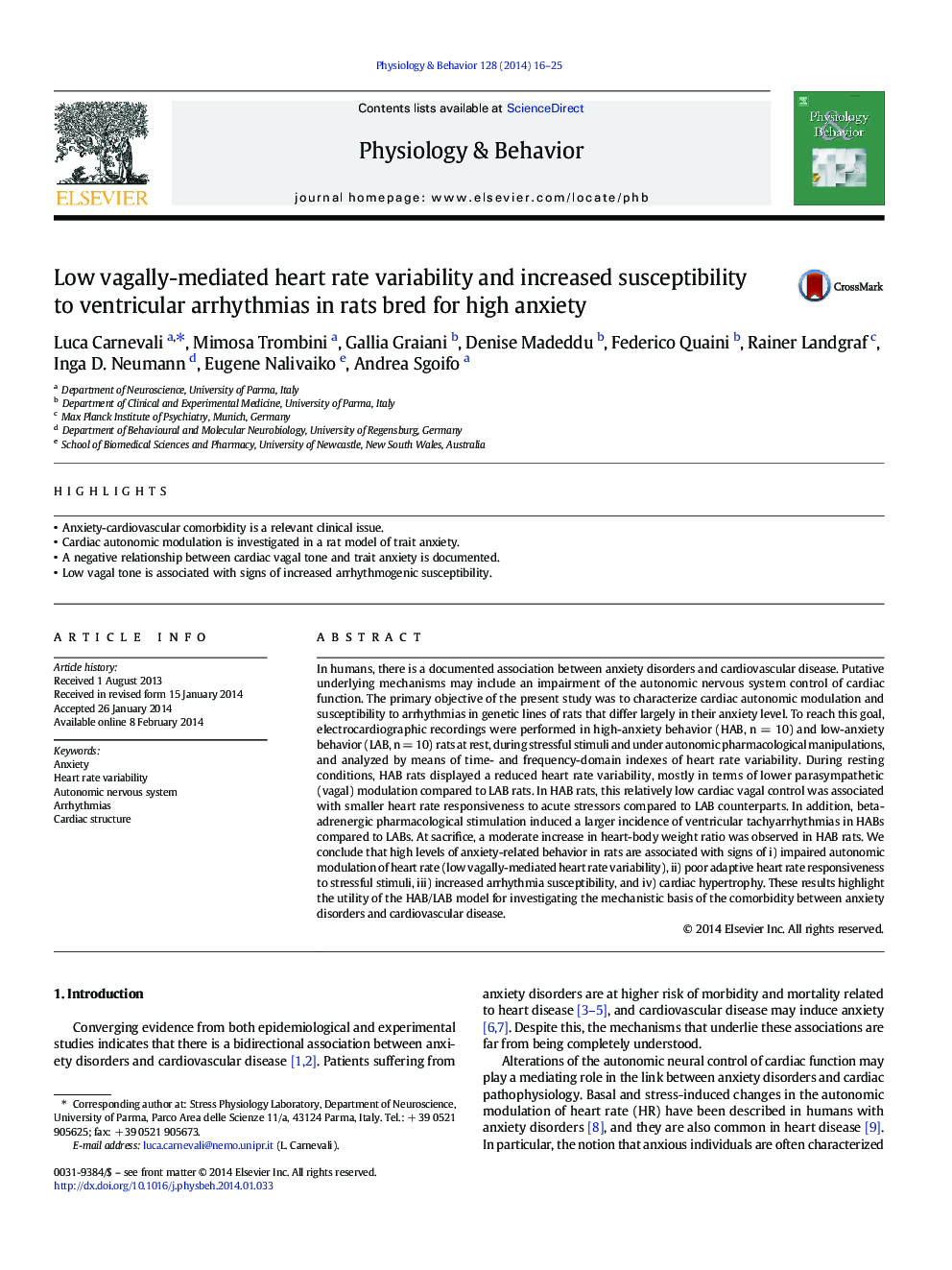| Article ID | Journal | Published Year | Pages | File Type |
|---|---|---|---|---|
| 5924412 | Physiology & Behavior | 2014 | 10 Pages |
â¢Anxiety-cardiovascular comorbidity is a relevant clinical issue.â¢Cardiac autonomic modulation is investigated in a rat model of trait anxiety.â¢A negative relationship between cardiac vagal tone and trait anxiety is documented.â¢Low vagal tone is associated with signs of increased arrhythmogenic susceptibility.
In humans, there is a documented association between anxiety disorders and cardiovascular disease. Putative underlying mechanisms may include an impairment of the autonomic nervous system control of cardiac function. The primary objective of the present study was to characterize cardiac autonomic modulation and susceptibility to arrhythmias in genetic lines of rats that differ largely in their anxiety level. To reach this goal, electrocardiographic recordings were performed in high-anxiety behavior (HAB, n = 10) and low-anxiety behavior (LAB, n = 10) rats at rest, during stressful stimuli and under autonomic pharmacological manipulations, and analyzed by means of time- and frequency-domain indexes of heart rate variability. During resting conditions, HAB rats displayed a reduced heart rate variability, mostly in terms of lower parasympathetic (vagal) modulation compared to LAB rats. In HAB rats, this relatively low cardiac vagal control was associated with smaller heart rate responsiveness to acute stressors compared to LAB counterparts. In addition, beta-adrenergic pharmacological stimulation induced a larger incidence of ventricular tachyarrhythmias in HABs compared to LABs. At sacrifice, a moderate increase in heart-body weight ratio was observed in HAB rats. We conclude that high levels of anxiety-related behavior in rats are associated with signs of i) impaired autonomic modulation of heart rate (low vagally-mediated heart rate variability), ii) poor adaptive heart rate responsiveness to stressful stimuli, iii) increased arrhythmia susceptibility, and iv) cardiac hypertrophy. These results highlight the utility of the HAB/LAB model for investigating the mechanistic basis of the comorbidity between anxiety disorders and cardiovascular disease.
